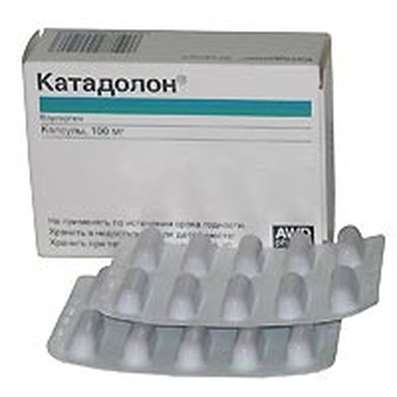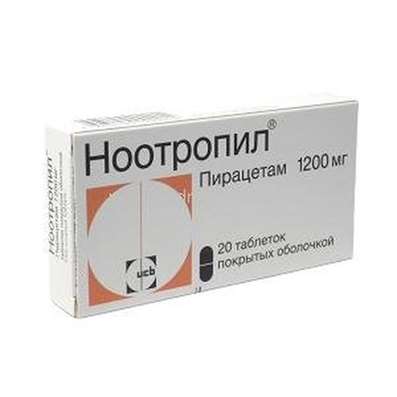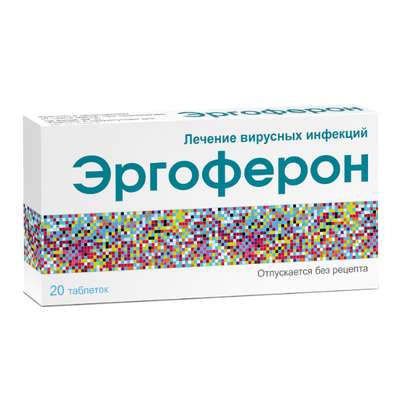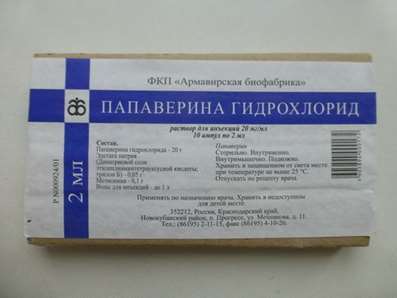Instruction for use: Ilomedin
I want this, give me price
Dosage form: Concentrate for solution for infusion
Active substance: Iloprost
ATX
B01AC11 Iloprost
Pharmacological groups
Antiaggregants
Nosological classification (ICD-10)
I73.0 Raynaud's Syndrome: Raynaud's syndrome Leriche; Raynaud's disease; Raynaud's phenomenon; RaynaudLeriche syndrome; Raynaud's disease; Raynaud's syndrome with trophic disorders; Peripheral angiopathy
I73.1 thromboangiitis obliterans [Buerger's disease]: Berger's disease; thromboangiitis obliterans; trombangiit; thromboangiitis obliterans; Buerger's disease
I73.9 Peripheral vascular disease, unspecified: angiospasm; Vasospasm / vasoconstriction; vasospastic disorders; Violation of venous microcirculation; Violation of circulation; Violation of peripheral blood circulation; Lack of peripheral blood circulation in the lower and upper limbs; Peripheral arterial occlusive disease; Peripheral arterial occlusive disease in stages III-IV on Fontaine; Peripheral vascular insufficiency; Peripheral vascular lesions; Peripheral vascular disorders; Peripheral circulatory disorder; spasm of artery; angiospasm; Functional peripheral arterial disease; Chronic occlusive disease; Chronic obliterating diseases of the lower limbs; Chronic arterial occlusive disease
I77.1 arteriostenosis: Occlusive arterial disease; Peripheral arterial occlusive disease;Peripheral arterial occlusive disease in stages III-IV on Fontaine
Composition
Concentrate for solution for infusion 1 ml
active substance: Iloprosta trometamol 0.027 mg
(Corresponding to 0.02 mg (20 μg) of iloprost)
Auxiliary substances: trometamol - 0.235 mg; Ethanol 96% - 1.62 mg; Sodium chloride - 9 mg; Solution of hydrochloric acid 1M - 0.76 mg; Water for injection - 990.758 mg
Description of dosage form
A clear, colorless or almost colorless solution.
Pharmachologic effect
Mode of action - antiaggregational.
Pharmacodynamics
Iloprost is a synthetic analog of prostacyclin, inhibits aggregation, adhesion and platelet release; Expands arterioles and venules; increases the density of capillaries (restores the microcirculation by induction of vasodilation, inhibition of platelet activation, restoring and protecting the endothelium, activate endogenous fibrinolysis and correcting imbalance in cytokine system) and reduces the increased vascular permeability caused by mediators such as serotonin or histamine in the microcirculation system; Activates endogenous fibrinolysis; exhibits an anti-inflammatory effect: it inhibits adhesion and migration of leukocytes after endothelial injury and accumulation of leukocytes into damaged tissue, reduces production of tumor necrosis factor (TNF-alpha;).
Pharmacokinetics
Distribution. Css in the blood plasma is achieved very quickly, 10-20 minutes after the onset of IV infusion. The time to achieve it linearly depends on the infusion rate, at a infusion rate of 3 ng / kg / min, a concentration approximately equal to (135 ± 24) pg / ml is achieved. After the end of the infusion, the concentration of iloprost in the plasma decreases very rapidly (this is due to the very high intensity of its metabolism). Metabolic clearance is approximately (20 ± 5) ml / kg / min. T1 / 2 from plasma in the terminal phase of distribution is about 0.5 h. 2 hours after stopping the infusion, the drug substance content is less than 10% of Css. The association with plasma albumin is 60%.
Metabolism and elimination. Iloprost is metabolized mainly by B-oxidation of the carboxyl side chain. In an unchanged form, the substance is not excreted from the body. The main metabolite, tetranoriloprost, is found in the urine in a free form and in 4 conjugated forms of diastereoisomers. As experiments on animals have shown, tetranoriloprost is pharmacologically inactive. The results of in vitro studies indicate a similar pattern of iloprost metabolism in the lungs after intravenous injection or inhalation.
Excretion. Excretion iloprost after i / v infusion in subjects with normal renal function and liver in most cases it is characterized by a biphasic profile with average T1 / 2, respectively, duration 3-5 and 15-30 min. The total clearance of iloprost is approximately 20 ml / kg / min, indicating that the metabolism of iloprost occurs partly outside the liver.
A mass balance study using iloprost-labeled 3H was performed in healthy subjects. After intravenous infusion, excretion of the total radioactivity was 81%, with 68% being excreted in the urine and 12% being excreted in the feces. Elimination from the plasma metabolites and their renal excretion are biphasic, the T1 / 2 from the plasma in the first phase is about 2 hours, in the second - about 5 hours and for urine -, respectively, 2 and 18 hours.
Renal insufficiency. The study using in / infusion iloprost has been shown that patients with end stage renal failure, periodically receiving dialysis treatment, a clearance is considerably lower (average clearance = (5 ± 2) mL / min / kg) than in patients with renal patients Deficiency that do not receive dialysis treatment (mean clearance = (18 ± 2) ml / min / kg).
Liver dysfunction. Since iloprost is extensively metabolized in the liver, changes in hepatic function affect the concentration of the drug in the blood plasma. Results of the study with iv administration of the drug included data from 8 patients with cirrhosis of the liver. The average clearance of iloprost was calculated as 10 ml / min / kg.
Age and sex. The pharmacokinetics of iloprost does not depend on the age and sex of the patient.
Indications of the drug Ilomedin
Obliterative thromboangiitis (Buerger's disease) in the late stages with critical limb ischemia in cases of lack of indications for re-evacuation;
Severe forms of occlusive disease of peripheral arteries, especially in cases of risk of amputation and with the impossibility of surgical operation on vessels or angioplasty;
Severe Raynaud's syndrome, leading to disability, not amenable to therapy with other drugs.
Contraindications
Hypersensitivity to iloprost or other components of the drug;
Pathological conditions in which the action of iloprost on platelets may increase the risk of bleeding (eg peptic ulcer of the stomach or duodenum in the acute stage, trauma, intracranial bleeding);
Severe ischemic heart disease or unstable angina; Myocardial infarction during the last 6 months; Acute heart failure or chronic congestive heart failure II-IV stage (according to the classification of the New York Heart Association); Severe heart rhythm disturbances;
Suspicion of congestion in the small circle of blood circulation;
pregnancy;
Lactation period.
With caution: patients with impaired cerebral circulation in the last 3 months (eg, transient ischemic disorder, stroke). Such patients need a thorough assessment of the relationship between benefit and risk of treatment (see also "Contraindications" - risk of bleeding, eg intracranial bleeding). With renal failure requiring dialysis, and with cirrhosis, the elimination of iloprost is reduced (see "Method of administration and dose"). It is necessary to take measures against further reduction of blood pressure (before starting therapy with Ilomedin) in patients with initially low BP figures; Patients with severe heart disease should be under close monitoring control. One should consider the possibility of developing orthostatic hypotension in patients moving from horizontal to vertical position after completion of Ilomedin administration.
Application in pregnancy and breastfeeding
Ilomedin should not be given to women during pregnancy and lactation. There are no data on the use of iloprost in pregnant women. According to preclinical studies, iloprost has a toxic effect on the fetus in rats, but not in rabbits and monkeys. Due to the fact that the potential risk of therapeutic use of iloprost in pregnancy is unknown, in the treatment of iloprost women of fertile age should use reliable contraceptives.
At present, there is no information on the penetration of iloprost into human breast milk, but since there is evidence that iloprost can penetrate into milk in rats in small amounts, it should not be administered to nursing mothers.
Side effects
Pharmacological action of iloprost is very often manifested by such side effects as headache (68.8%), vasodilation, causing a feeling of hot flushes (58%), or symptoms from the gastrointestinal tract (up to 29.7%). Typically, these side effects occur at the beginning of treatment when selecting the maximum tolerated dose and quickly disappear with a reduced dose.
Another group of side effects is associated with reactions at the site of administration. Thus, redness and pain may occur at the site of administration, and dilatation of the cutaneous vessels can sometimes lead to erythema in the form of a strip above the infusion site. The frequency of unwanted side effects, based on the analysis of generalized data, is given below (very often ≥1 / 10, often more than 1/100 and less than 1/10, infrequently more than 1/1000 and less than 1/100, rarely more than 1 / 10000 and less than 1/1000, very rarely - less than 1/10000). Table 3 below lists the undesirable side effects observed in the iloprost treatment groups (553 patients) at a higher frequency than in the placebo groups (507 patients), as part of controlled clinical trials. Actual frequency rates are based on a cumulative database of 3,325 patients who received iloprost in both controlled and uncontrolled clinical trials, or as part of a charity-testing program. Table 3 summarizes the data obtained mainly in elderly patients and patients with multiple pathologies suffering from occlusive disease of peripheral arteries in stages III and IV, as well as in patients with obliterative thromboangiitis.
Table 3
| System of an organism | Incidence of side effects | |||
| Very often | Often | Infrequently | Rarely | |
| Metabolic and nutritional disorders | | Anorexia | | |
| Nervous system | Headache | Apathy, dizziness, paresthesia, hyperesthesia, burning sensation, ringing in the ears anxiety, agitation, retardation, drowsiness | Tremor, anxiety, depression, hallucinations, migraine, fainting | |
| Body of sight | | - | Impaired vision, irritation of the mucous membrane of the eyes, pain in the eyes | |
| The organ of hearing | | - | - | Vestibular disorders |
| CAS | Hot flushes | Hypotensive reactions, bradycardia | Arrhythmia, extrasystole, cerebrovascular disorders, ischemia, myocardial infarction, deep vein thrombosis, pulmonary embolism | - |
| Respiratory system | - | - | Bronchial asthma | Cough |
| GIT | Nausea, vomiting | Diarrhea, abdominal discomfort, pain | Dyspepsia, tenesmus, constipation, belching, dysphagia, diarrhea with blood, rectal bleeding, dry mouth, taste change | Proctitis |
| Hepatobiliary System | - | - | Jaundice | |
| Skin and subcutaneous tissue | Increased sweating | - | Itching | |
| Musculoskeletal system | | Pain in the chewing muscles, trismus, myalgia, arthralgia | Thetania, convulsive twitching, hypertonia | |
| Kidney and urinary system | | - | Pain in the kidney, tenesmus, changes in urine, dysuria, impairment of the urinary tract | |
| General pathology and disorders at the site of administration | | Local pain / generalized pain, fever / hyperthermia, sensation of heat, weakness, general malaise, chills, fatigue, thirst, local reactions (erythema, pain, phlebitis) | | |
Iloprost increases the antihypertensive effect of β-adrenoblockers, CCB and all vasodilators, as well as ACE inhibitors. If there is a significant arterial hypotension, BP can be corrected by reducing the dose of iloprost.
Since iloprost inhibits platelet function, its use in combination with heparin or indirect anticoagulants (coumarin derivatives), or other platelet aggregation inhibitors (acetylsalicylic acid, NSAIDs, PDE inhibitors and vasodilators from the group consisting of nitrates, e.g. molsidomine), can increase the risk of bleeding. In this case, infusion of Ilomedin should be discontinued.
Use of acetylsalicylic acid in a dose of 300 mg / day course of 8 days prior to use Ilomedina, has no effect on the pharmacokinetics of iloprost. In an animal study, it was found that iloprost can cause a decrease in Css preparations of the tissue plasminogen activator (TAP) in plasma. Results of studies in humans show that infusion of iloprost not affect the pharmacokinetics of digoxin multiple oral doses in patients and if applied simultaneously with TPA preparations iloprost has no effect on its pharmacokinetics.
In animal experiments, the vasodilating effect of iloprost was weakened if the experimental animals had previously received SCS, but the inhibitory effect on platelet aggregation did not change at the same time. The significance of this data for the clinic has not been established yet.
Although clinical studies have been conducted, studies in vitro, in which was studied the inhibitory potential of iloprost against enzyme activity of cytochrome P450, revealed that significant suppressing drug metabolism by these enzymes result in exposure to iloprost unlikely.
Dosing and Administration
IΜ, by infusion (using an infusomat or an automatic syringe).
Ilomedin should be used only in conditions of careful monitoring and monitoring of the patient's condition in hospitals or outpatient facilities that have the appropriate technical capabilities.
Before starting treatment, women should be excluded from pregnancy.
Duration of treatment - up to 4 weeks.
Ilomedin should be used only after dilution. The solution must be freshly prepared. The contents of the ampoule and the solvent must be thoroughly mixed.
Breeding
It is necessary to strictly follow the dilution method, depending on the method of administration of the solution.
1. Using an infusomat (infusion pump)
The contents of the ampoule with 1 ml of concentrate for the preparation of the infusion solution are diluted with a sterile 0.9% solution of sodium chloride or 5% glucose solution (dextrose) for injection to a volume of 100 ml; The contents of the ampoule with 2.5 ml of concentrate for the preparation of a solution for infusions - up to a volume of 250 ml.
2. Using an automatic syringe
The contents of the ampoule with 1 ml concentrate for solution for infusion is diluted with sterile 0.9% sodium chloride or 5% glucose solution of sodium (dextrose) for injection to a volume of 10 ml; The contents of the ampoule with 2.5 ml of concentrate for the preparation of a solution for infusions - up to a volume of 25 ml.
After breeding, Ilomedin is administered daily as a 6-hour infusion into the peripheral vein or a catheter installed in the central vein. The rate of administration (dose) depends on the individual tolerability and is 0.5-2 ng / kg / min.
It is necessary to monitor blood pressure and heart rate at the beginning of infusions and with each increase in the dose of the drug.
During the first 2-3 days, individual drug tolerance is determined - treatment is started at a rate of 0.5 ng / kg / min for 30 minutes. After that, the dose is incrementally incremented by 0.5 ng / kg / min approximately every 30 minutes. Precise infusion rate was calculated based on the body weight at the maximum tolerated dose in the range of 0.5 to 2 ng / kg / min (see. Infusion rate below table using infusomats or automatic syringe).
Depending on the frequency of such side effects, such as headache, nausea or a decrease in blood pressure, the infusion rate should be reduced to the maximum tolerable. With the development of severe side effects, infusion should be interrupted. Treatment is usually continued for 4 weeks, applying doses that were well tolerated in the first 2-3 days of the previous course of treatment.
Tables 1 and 2 can be used to calculate the infusion rate corresponding to the body weight of a particular patient and the dose to be administered.
Table 1
The infusion rate (ml / h) for the administration of various doses using an infusomat (infusion pump)
| Body weight, kg | Dose, ng/kg/min | |||
| 0,5 | 1 | 1,5 | 2 | |
| Infusion rate, ml/h | ||||
| 40 | 6 | 12 | 18 | 24 |
| 50 | 7,5 | 15 | 22,5 | 30 |
| 60 | 9 | 18 | 27 | 36 |
| 70 | 10,5 | 21 | 31,5 | 42 |
| 80 | 12 | 24 | 36 | 48 |
| 90 | 13,5 | 27 | 40,5 | 54 |
| 100 | 15 | 30 | 45 | 60 |
| 110 | 16,5 | 33 | 49,5 | 66 |
| Body weight, kg | Dose, ng/kg/min | |||
| 0,5 | 1 | 1,5 | 2 | |
| Infusion rate, ml/h | ||||
| 40 | 0,6 | 1,2 | 1,8 | 2,4 |
| 50 | 0,75 | 1,5 | 2,25 | 3 |
| 60 | 0,9 | 1,8 | 2,7 | 3,6 |
| 70 | 1,05 | 2,1 | 3,15 | 4,2 |
| 80 | 1,2 | 2,4 | 3,6 | 4,8 |
| 90 | 1,35 | 2,7 | 4,05 | 5,4 |
| 100 | 1,5 | 3 | 4,5 | 6 |
| 110 | 1,65 | 3,3 | 4,95 | 6,6 |
Patients with systemic scleroderma who suffer from Raynaud's syndrome often receive a shorter course of treatment (3-5 days) to achieve improvement that lasts for several weeks.
It is not recommended to perform continuous infusions for several days because of the possibility of developing tachyphylaxis, which is manifested in a weakened effect on platelets, and the possibility of a rebound syndrome, manifested in an increase in the propensity to aggregate platelets upon completion of the course of therapy. However, there are no reports of any clinical complications associated with these phenomena.
With renal failure requiring dialysis, and with cirrhosis of the liver, the elimination of iloprost is reduced. In these cases, it is necessary to reduce the recommended dose by 2 times.
Overdose
Symptoms: A possible reduction in blood pressure, as well as headache, blood flow to the face, nausea, vomiting and diarrhea. Possible increased blood pressure, bradycardia or tachycardia, pain in the lower legs or back.
Treatment: interruption of infusion, further monitoring of patients and symptomatic therapy. Specific antidotes are unknown.
Special instructions
Use in children. Currently, there are only single reports on the use of this drug in children and adolescents.
In the hope of success of conservative therapy with iloprost, surgical operation should not be postponed in patients requiring emergency leg amputation (for example, with infected gas gangrene).
Patients should be strongly advised to quit smoking.
Accidental administration of undiluted Ilosidine solution in nearby tissues can lead to their local change at the injection site (redness, pain, itching, a feeling of heat).
Avoid taking the drug inside and getting it on the mucous membranes. Getting on the skin, iloprost can lead to a long, albeit painless, erythema. Therefore, you must be careful and avoid contact with the skin. If you get iloprost on any part of the skin, it should be washed immediately with a large amount of water or with a physiological solution of sodium chloride.
Release form
Concentrate for solution for infusion, 20 μg / ml. For 1 and 2.5 ml in ampoules with a capacity of 1 and 3 ml, respectively, of colorless hydrolytic glass of type I. At 1 or 5 amp. In a cardboard pallet. 1 pallet with 1 or 5 amp. Or 4 pallets with 5 amp. Placed in a cardboard box.
Manufacturer
Bayer Pharma AG, Germany.
Conditions of supply of pharmacies
On prescription.
Storage conditions of the drug Ilomedin
At a temperature not exceeding 30 ° C.
Keep out of the reach of children.
The shelf life of the drug Ilomedin
4 years.
Do not use beyond the expiration date printed on the package.

 Cart
Cart





